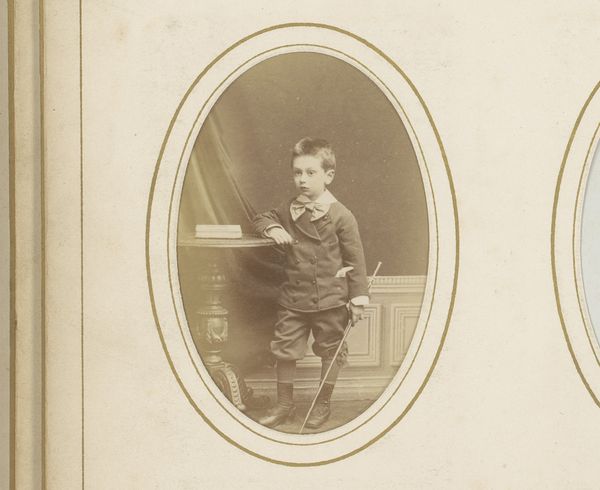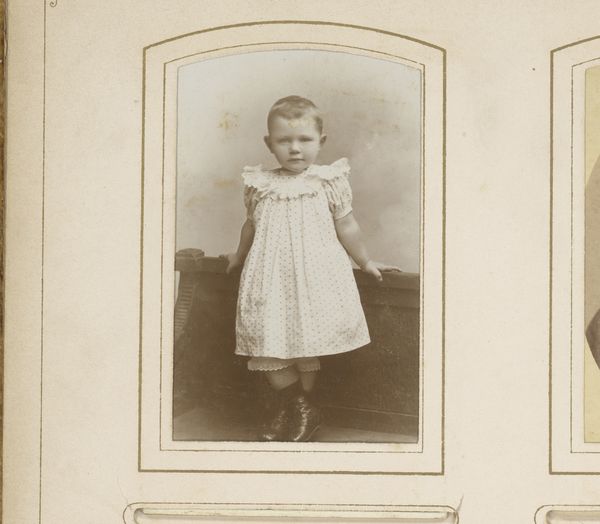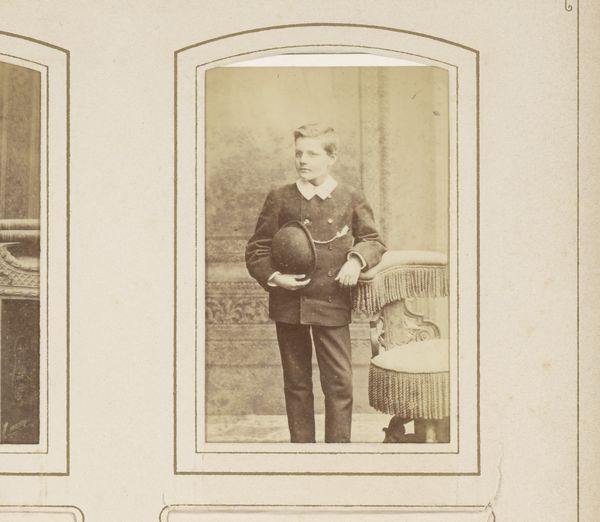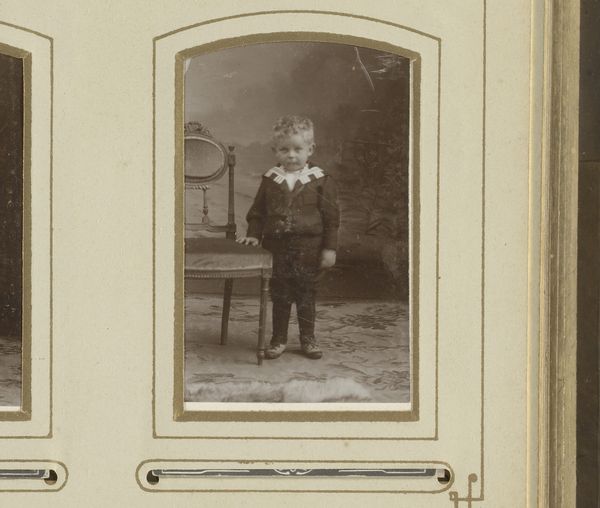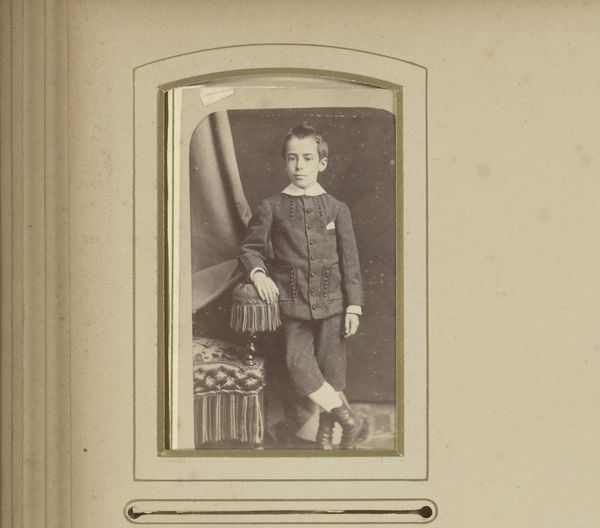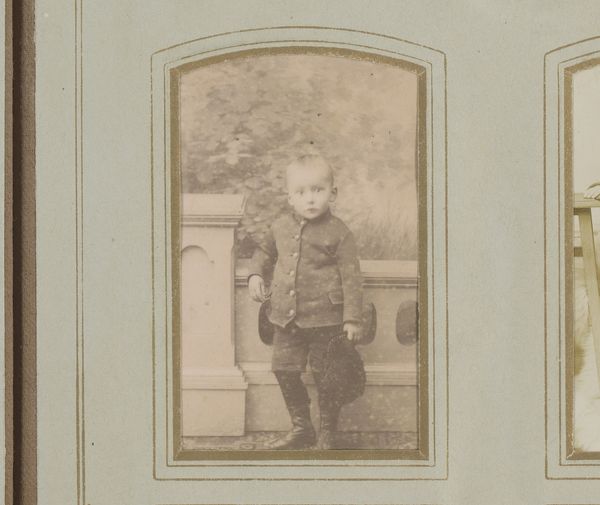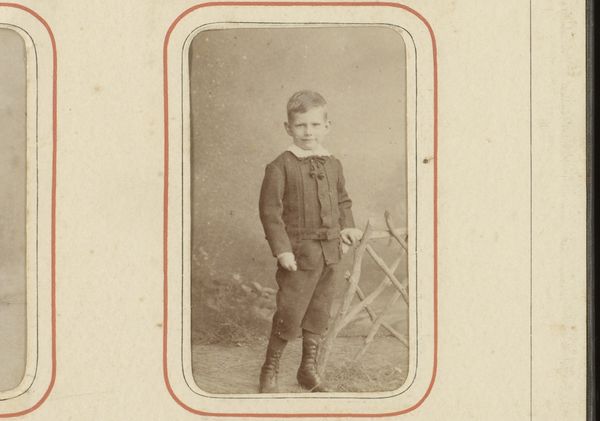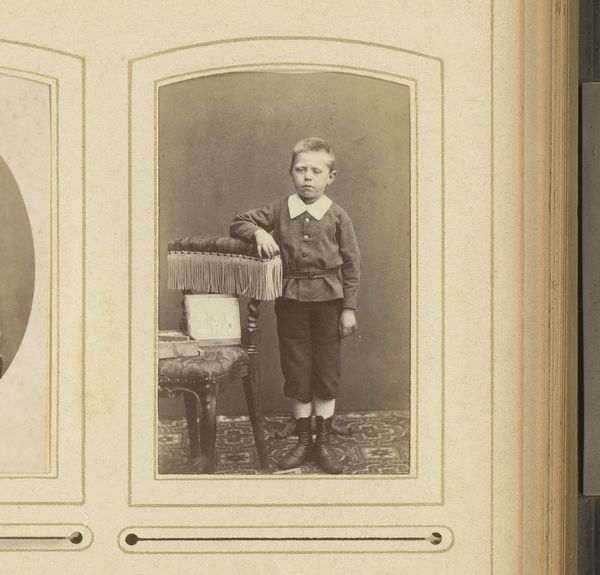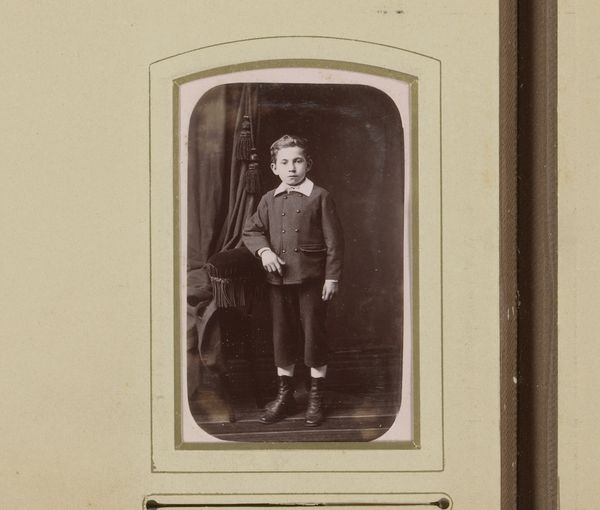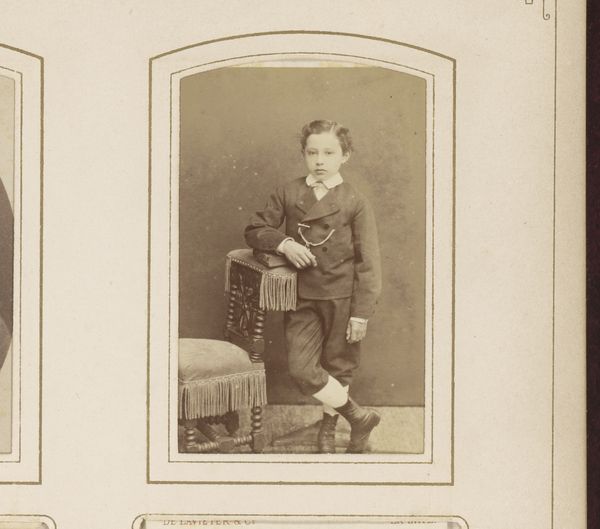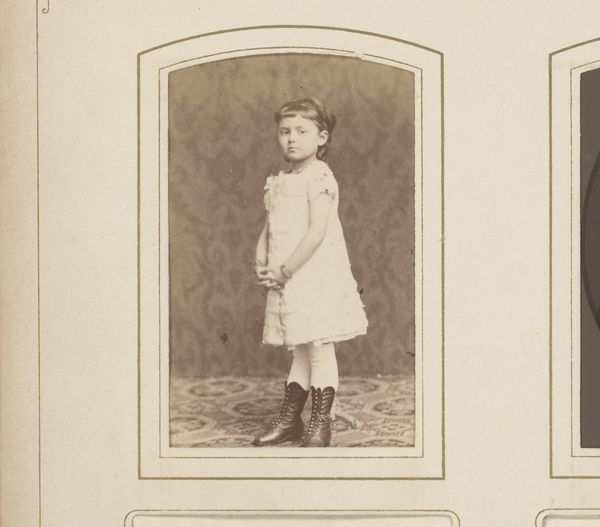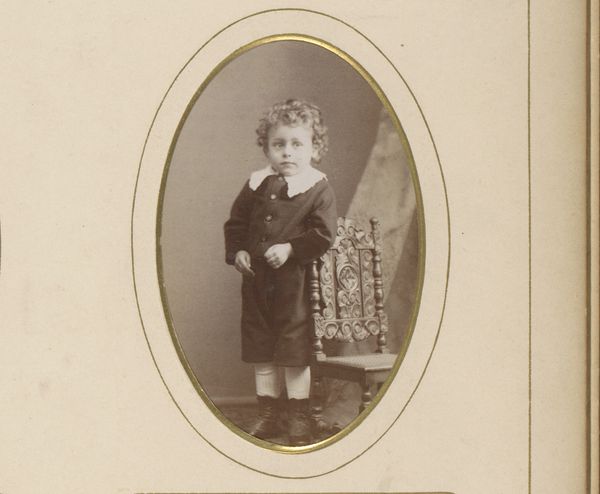
Portret van een staande jongen, leunend op een bureau 1861 - 1900
0:00
0:00
careleduardwesterborg
Rijksmuseum
photography, gelatin-silver-print
#
portrait
#
photography
#
gelatin-silver-print
#
realism
Dimensions: height 83 mm, width 52 mm
Copyright: Rijks Museum: Open Domain
Curator: Here we have an evocative photograph entitled "Portret van een staande jongen, leunend op een bureau," placing us sometime between 1861 and 1900. It's a gelatin silver print. What are your initial thoughts? Editor: The first thing I notice is how still and formal it feels, the tonality a study in sepia and shadow. His stance, the lean, even the wallpaper seem deliberately arranged to emphasize a sense of restrained composure. Curator: Absolutely. Consider the power dynamics inherent in portraiture of this era. A studio portrait was often a status symbol, accessible mostly to those of the bourgeois class and it played a role in constructing and communicating social identity, particularly for children of the time. Editor: Indeed. Look at the boy's double-breasted jacket, and the subtle contrast provided by his pristine white collar and cuffs—these details provide visual anchor, drawing attention to the face and the sitter’s careful, precise grooming. Semiotically, these details speak to order, status, and societal expectation. Curator: Right, there is also an interesting contradiction at play. Children of this era, who are also often working in dangerous conditions in factories and living in the streets were hardly able to be the picture of decorum here. The photograph in essence becomes a powerful projection and active propaganda that rewrites over other, uncomfortable realities of children and work in the 19th century. Editor: That brings forth a strong critique. As far as photographic qualities go, this artist makes careful choices in relation to balance. Notice how the dark rectangle of the desk serves to ground the lightness and openness of the overall scene. Curator: I am very much attuned to that compositional element, which really centers and empowers our main subject. To think about how often in life children of disenfranchised communities are displaced from images like these reminds us of what's at stake and what's gained with social representation. Editor: In essence, we're dissecting not just a photograph, but a preserved fragment of a particular historical consciousness. I found that very enlightening. Curator: Me too, thinking more critically about these older works only enables us to work more consciously in our world today.
Comments
No comments
Be the first to comment and join the conversation on the ultimate creative platform.
